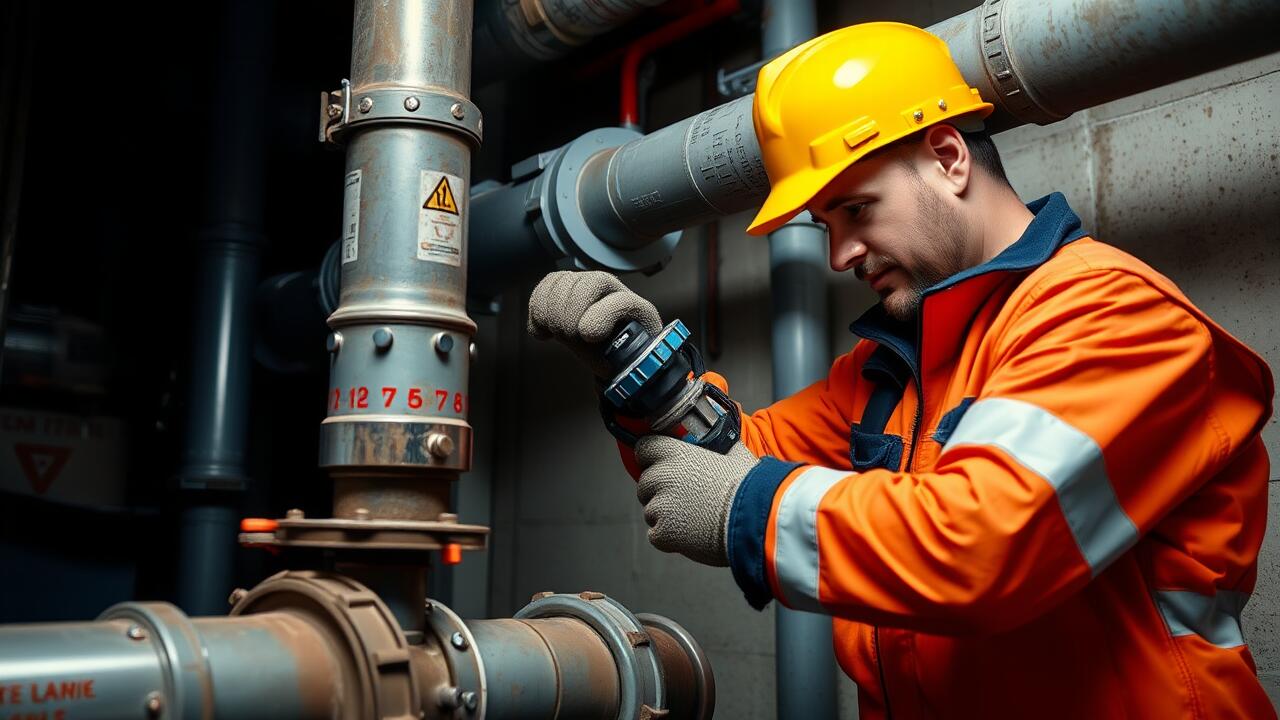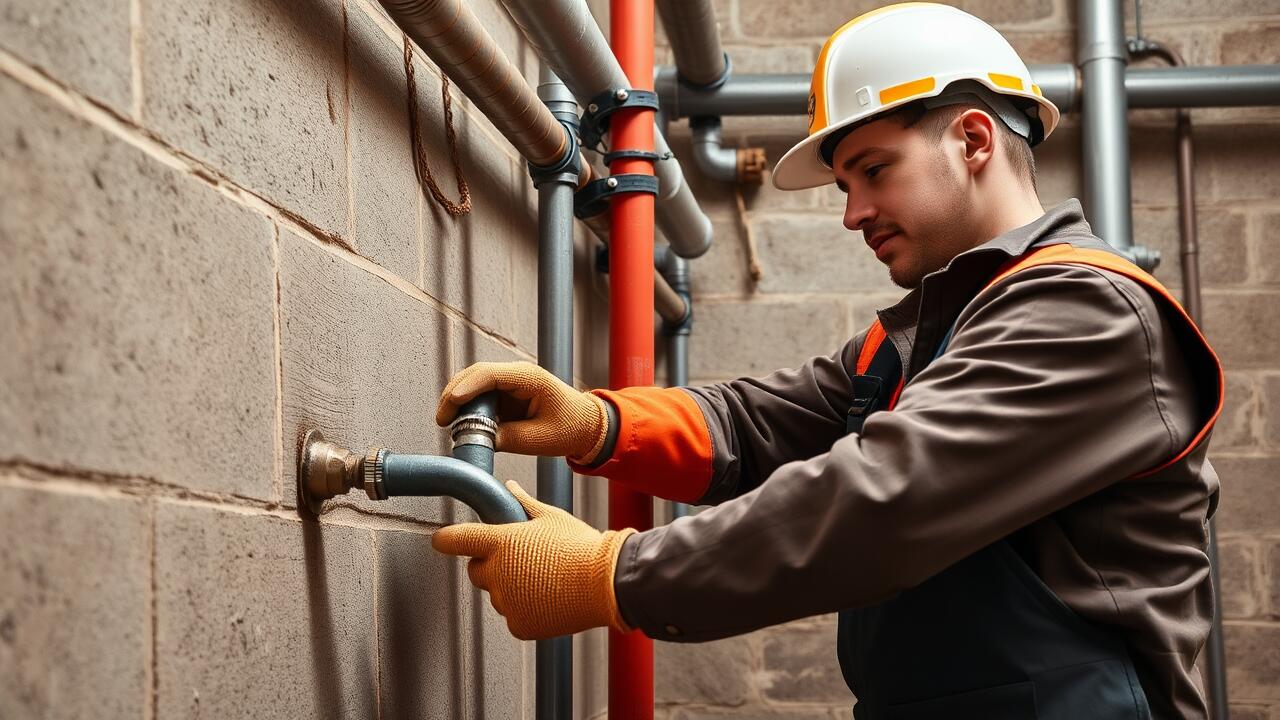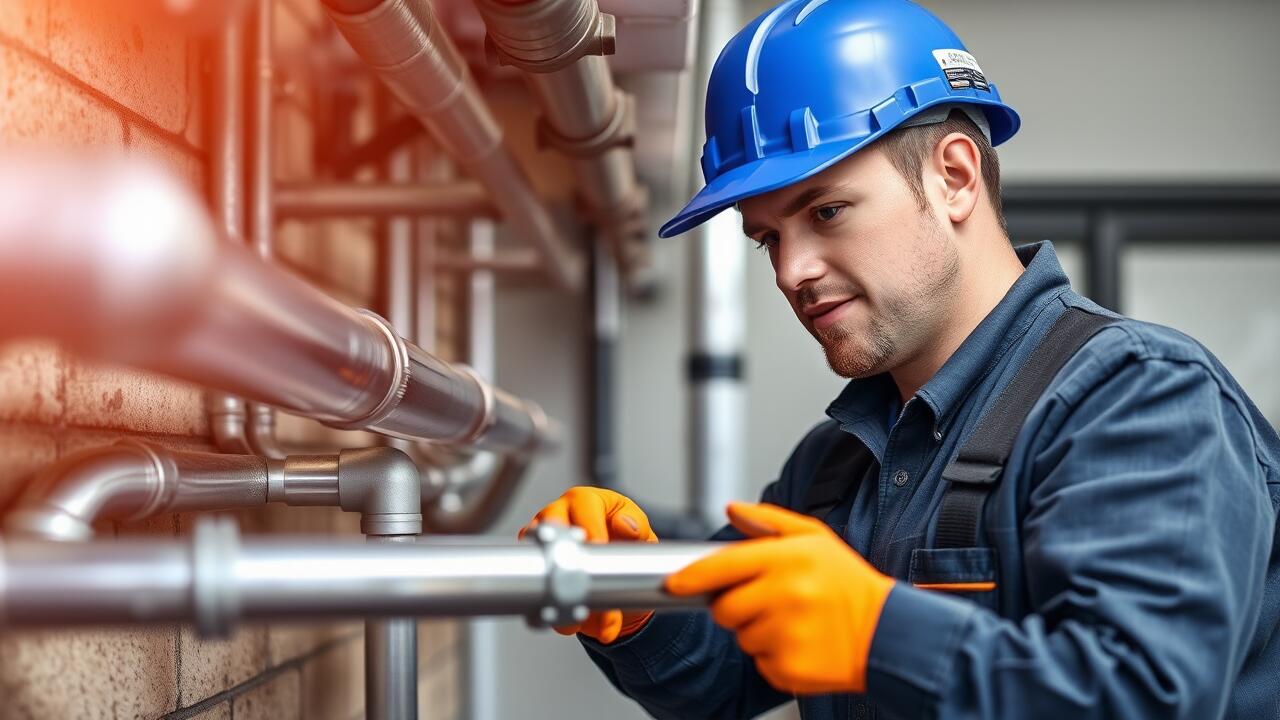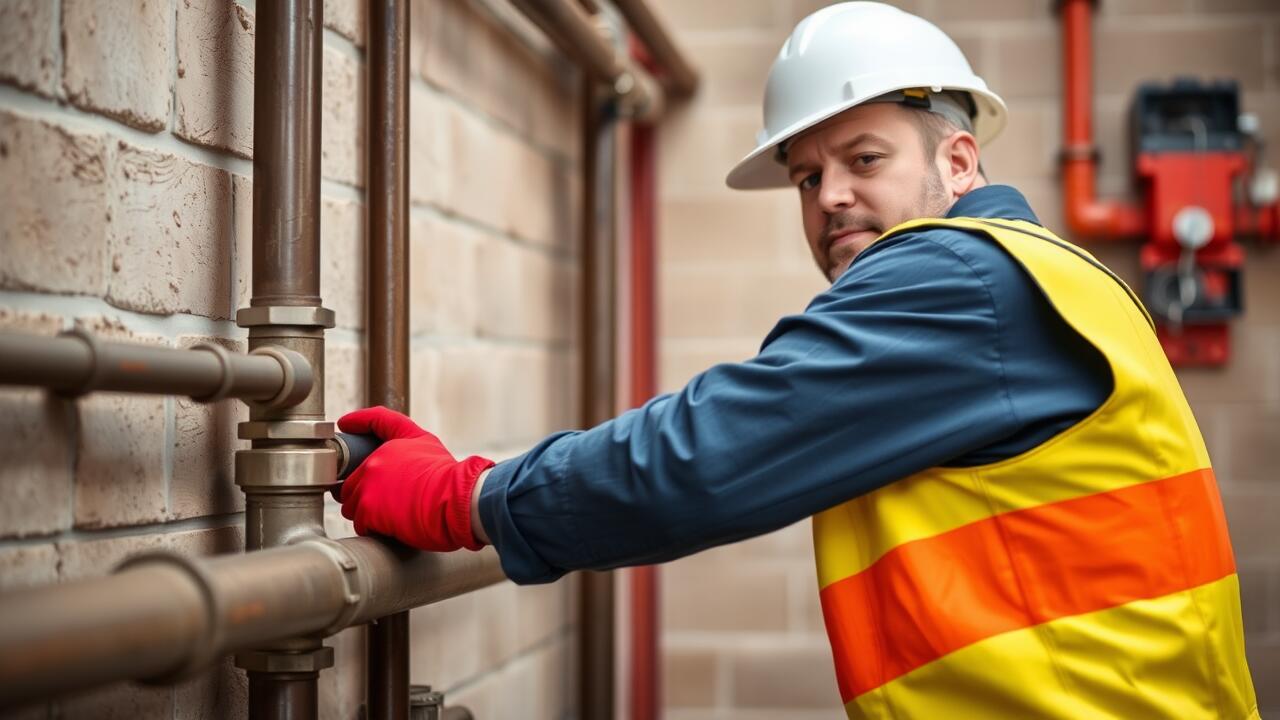
Maintenance Tips for Galvanized Pipes
Regular maintenance is essential for preserving the integrity and longevity of galvanized pipes. Homeowners should conduct periodic inspections to check for signs of moisture and corrosion. These inspections can help identify small leaks or rust spots before they become significant issues. Keeping the pipe surfaces clear of debris and ensuring proper drainage can also reduce the likelihood of water pooling around the pipes. In areas such as Los Angeles, where the climate can fluctuate, routine care is particularly important.
Additionally, proper sealing and protective coatings can provide extra layers of defense against corrosion. When engaging in pipe installation in Los Angeles, using high-quality materials and following recommended practices ensures optimal performance. If any issues arise, seeking professional help promptly can prevent further damage to the plumbing system. Regular upkeep not only extends the lifespan of galvanized pipes but can save homeowners from costly repairs in the long run.
Regular Inspections and Care
Routine inspections of galvanized pipes are essential to maintain their integrity and functionality. Homeowners should routinely check for any signs of leaks, corrosion, or buildup within the piping. A simple visual inspection can often reveal surface rust patches or discoloration, which may indicate deeper problems. Regular maintenance helps identify potential issues before they escalate into costly repairs, ensuring the system operates efficiently.
Proper care involves not only monitoring the pipes but also implementing preventive measures. Using soft cleaning agents rather than harsh chemicals can help protect the pipe's surface from deterioration. In areas like Los Angeles, where pipe installation services are frequently needed, it is advisable to consult professionals for any necessary repairs or upgrades. Keeping a close eye on galvanized pipes and proactively addressing concerns can significantly extend their lifespan and effectiveness.
Challenges Associated with Galvanized Pipes
Galvanized pipes have been a popular choice for plumbing and water supply systems for decades. Despite their durability, they come with several challenges that property owners and installers should be aware of. One significant concern is their susceptibility to rust and corrosion over time. This degradation can lead to reduced water flow, leaks, and potential contamination of the water supply. Such issues often necessitate costly repairs or replacements, making awareness critical for home maintenance.
Another challenge associated with galvanized pipes is their tendency to accumulate mineral deposits. Over time, these deposits can build up, further impacting water flow and leading to clogs. Regular maintenance is essential to keep these pipes in optimal condition. When considering replacements or new installations, individuals should seek professional guidance, such as a Pipe installation Studio City, Los Angeles, to ensure proper assessments and effective solutions for long-term utility.
Potential for Rust and Degradation
Galvanized pipes are known for their resistance to corrosion due to the protective zinc coating. However, over time, this coating can wear away due to various factors, such as exposure to harsh chemicals or extreme weather conditions. Once the zinc layer degrades, the underlying steel becomes susceptible to rust. The presence of moisture can accelerate this process, leading to significant deterioration of the pipes. Homeowners should be aware that older galvanized pipes may experience severe rust issues, impacting both the performance and safety of plumbing systems.
In areas like Encino, Los Angeles, regular maintenance is essential to address the potential for rust and degradation. Inspection of the pipes for any signs of rust or leaks helps identify issues before they escalate. Replacement may be required for severely affected sections to prevent further damage to the plumbing infrastructure. Considering the local environment and factors affecting pipe integrity is crucial. Professional guidance during pipe installation in Encino, Los Angeles, can ensure that appropriate materials and techniques are employed to mitigate these risks effectively.
Installation Guidelines for Galvanized Pipes
When planning for galvanized pipe installation, proper measurements and alignment are crucial. Ensure that all fittings and joints are compatible with galvanized materials to prevent leaks or structural weaknesses. The use of thread sealant can enhance the integrity of the connections, protecting against moisture intrusion. Always take care to properly clean the surfaces that will be joined. This attention to detail not only facilitates a smoother installation process but also extends the lifespan of the piping system.
It is important to consider local building codes when installing galvanized pipes. Compliance with regulations ensures safety and effectiveness in your plumbing system. For those in need of professional assistance, looking for services like "Pipe installation Encino, Los Angeles" can connect you with experienced technicians knowledgeable about local requirements. By following best practices and engaging qualified professionals, homeowners can achieve optimal performance and reliability in their pipe systems.
Best Practices for Proper Fitting
Proper fitting of galvanized pipes is essential to ensure a secure and leak-free connection. When installing these pipes, it is important to use the right tools and equipment specific to the diameter and type of pipes being used. Ensuring that the ends of the pipes are cut cleanly and evenly will help avoid any obstructions that could disrupt water flow. Additionally, applying thread sealant or tape to the male threads can further reduce the chances of leaks. Adhering to these practices not only enhances the longevity of the installation but also ensures optimal performance.
Choosing the right fittings is crucial for a successful installation. Utilizing corrosion-resistant fittings can significantly decrease the likelihood of rust and deterioration over time. When considering pipe installation in Northridge, Los Angeles, environmental factors such as soil conditions and the potential for temperature fluctuations should also be taken into account. Ensuring that all fittings are aligned correctly before tightening will help maintain the integrity of the connections. This attention to detail during installation contributes to the overall effectiveness and durability of galvanized piping systems.
FAQS
What are galvanized pipes?
Galvanized pipes are steel pipes that have been coated with a layer of zinc to prevent corrosion and rust, making them suitable for various plumbing and structural applications.
How can I maintain my galvanized pipes?
Regular inspections for leaks, checking for signs of rust or corrosion, and ensuring proper drainage can help maintain galvanized pipes. Additionally, keeping the pipes clean and free of debris is essential.
What challenges can arise with galvanized pipes?
One of the main challenges is the potential for rust and degradation over time, especially if the zinc coating is damaged. Other issues may include mineral buildup and decreased water pressure.
What are the best practices for installing galvanized pipes?
Best practices include ensuring proper measurements, using the correct fittings, and applying thread sealant to prevent leaks. It's also important to follow local plumbing codes and regulations.
Can galvanized pipes be used for drinking water?
While galvanized pipes were commonly used for drinking water in the past, they may pose health risks due to potential lead contamination. It's advisable to consult with a professional regarding the suitability of existing galvanized pipes for potable water.



